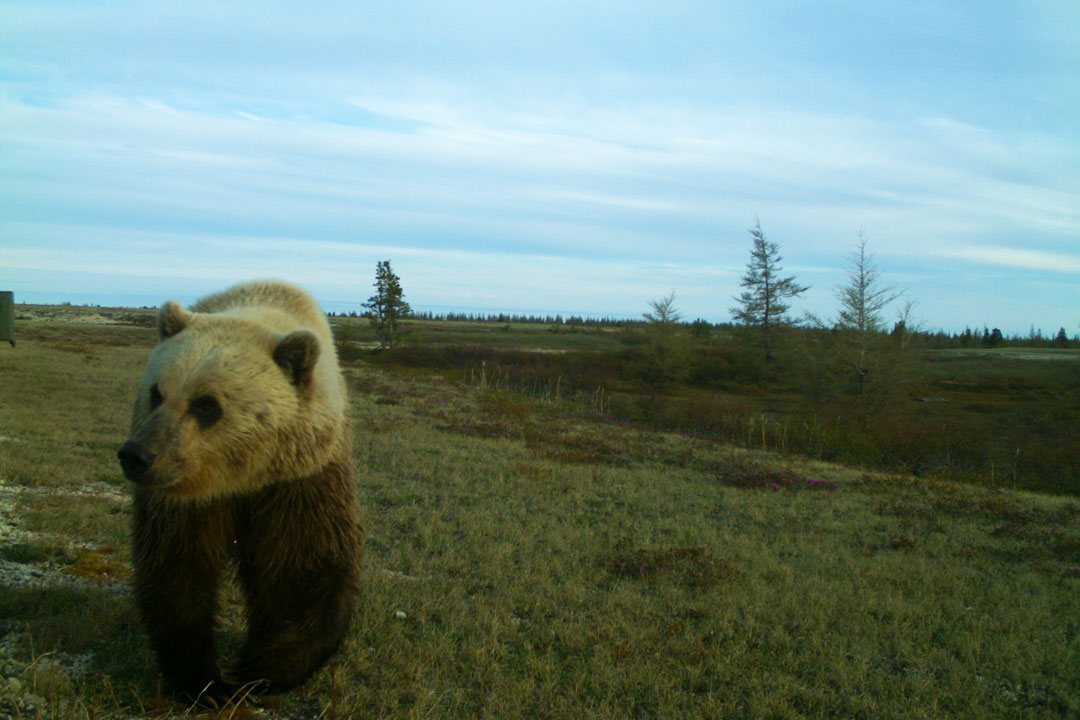
USask researchers find changing environment bringing bear species together
In an unprecedented finding, University of Saskatchewan (USask) researchers have recorded all three species of North American bears occupying overlapping territory in Canada’s subarctic.
In a just published paper in the peer-reviewed journal Arctic Science, the researchers report they have documented the presence of polar bears, black bears and grizzlies in Wapusk National Park on the west coast of Hudson Bay in northern Manitoba.
“These sightings are consistent with expected ecological responses to the amplified effects of climate change on high-latitude ecosystems,” said lead author Douglas Clark, a conservation scientist at the USask School of Environment and Sustainability (SENS). “Our observations add to growing evidence that grizzlies are substantially increasing their range in northern Canada.”
The north is warming rapidly and accelerating the rate of biological, physical, ecological and social impacts, the researchers say in the article, Novel range overlap of three ursids in the Canadian subarctic.
The response of bears to climate change may include seeking new or expanded habitats and new food sources, resulting in increased inter-species interactions, Clark said. Wapusk is located at the convergence of boreal forest, tundra and ocean ecosystems that are all changing quickly with climate change.
Clark said black bears are at the northern edge of their habitat range in Wapusk, which is at the southeastern edge of an evident range expansion by grizzly bears across the Canadian Arctic and sub-Arctic region.
A large proportion of polar bears from western Hudson Bay spend the summer and fall in Wapusk because of the complete melting of sea ice, with pregnant females overwintering inland in a maternity denning area.
The paper is based on observations from motion-activated cameras installed in three remote field camps in Wapusk at the behest of Parks Canada, which asked researchers to investigate the pattern and causes of polar bears visiting the sites. Between 2011 and 2017, the cameras recorded 401 bear visits—25 by black bears, 10 by grizzlies and 366 by polar bears.
“What’s clearly new are the grizzlies,” said Clark. “It’s likely that they will benefit the most because they have been known to dominate the other two species elsewhere, for instance eating both black bears and polar bears, or displacing them.”
But while a grizzly may prey on an individual bear, it’s not a large consideration at the population level, Clark said. Large black bears can have the upper hand in an encounter with a young grizzly, for instance. The smaller species of bears will modify their behaviour to avoid grizzlies.
A major question that arises is how the interspecies interactions will affect bear conservation and management efforts in the region, he said.
While black bears aren’t deemed a threatened species, grizzlies are identified as a species of special concern in Canada and remain on the list of extirpated animals in Manitoba.
While black bears aren’t deemed a threatened species, grizzlies are identified as a species of special concern in Canada and remain on the list of extirpated animals in Manitoba.
Although the polar bear population in western Hudson Bay is considered temporarily stable, the bears are listed provincially as threatened and are vulnerable to a warming Artic climate.
“This range overlap shouldn’t be viewed as a threat to any of these bears, but should be understood as an ecological response to environmental change,” said Clark.
The research also includes Ryan Brook (associate professor in the College of Agriculture and Bioresources); Chelsea Oliphant-Reskanski, Michel Laforge and Kiva Olson (former students in SENS and the College of Arts and Science), and Danielle Rivet (student in the College of Arts and Science).
The study was funded by Parks Canada, USask, the Social Science and Humanities Research Council, Natural Sciences and Engineering Research Council of Canada’s Belmont Challenge, and the Churchill Northern Studies Centre.

